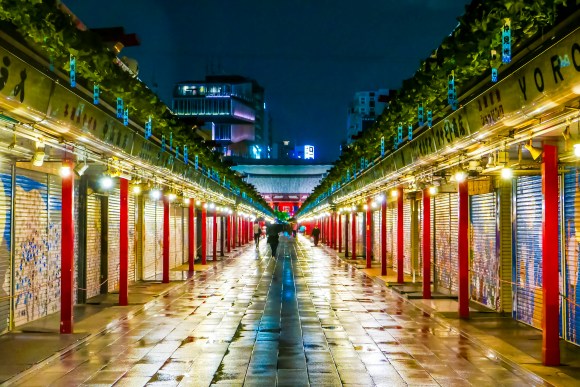
Businesses in one of Japan’s oldest shopping strips are wondering if they can survive after the surprising new increase.
Sensoji temple in Tokyo’s Asakusa district is one of the top tourist sites in the country, drawing thousands of tourists to the area every year. If you’ve ever visited Sensoji, chances are you’ve entered through the Kaminarimon “Thunder Gate” with the enormous red lantern hanging inside, before walking up the bustling walkway lined with shops that leads to the main temple building.
This shopping street, located inside the temple grounds, is known as Nakamise Dori (literally “street of inside stores”), and it’s one of the oldest shopping strips in Japan. Today, approximately 89 shops can be found along the 250-metre (820-foot) long approach to the temple, selling all sorts of Japanese souvenirs and traditional food and confectioneries.
▼ Nakamise Dori is one of the most bustling shopping streets in Tokyo, with throngs of people making it hard to move along the narrow walkway on the weekends.
Despite the steady stream of customers along the approach, shopkeepers are now concerned about their future, after Sensoji sent out a notice to business owners advising them of a 16-fold increase in their rent. According to one shopkeeper, he was made aware of the sudden change in September, when each store along Nakamise Dori was given two sheets of paper to inform them that the rent would be increased by 16 times from next January. He says he won’t be able to pay the rent after such an increase and nor will many of the other store owners.
The reason for the increase appears to be due to the fact that the storeholders had previously been paying rent to the Tokyo Metropolitan Government, because although the land that Nakamise Dori is situated on is owned by Sensoji temple, the buildings on the land belong to Tokyo. However, in July, Sensoji bought the buildings on the land from Tokyo, which is why the incredibly cheap current average monthly rent of 23,000 yen (US$261.50) will soon shoot up to 370,000 yen.
According to the head steward of Sensoji, the impetus for the change stems from the fact that in 2011, the Tokyo Metropolitan Government asked them to pay fixed assets tax, as Nakamise Dori was acting as a profitable business. Therefore, they investigated the market prices to adjust the rent accordingly, with lawyers providing them with a recommended amount in the middle of September, which was then sent out to shopkeepers.
People online have been expressing shock and confusion over the news:
“I’m astonished that the rent at that place has been just 2,300 yen per month.”
“What type of system is this? It sounds like a method for money laundering.”
“Can they really take that much tax from a religious organisation?”
“It sounds like Sensoji had no other choice than to increase the rent, given the circumstances.”
“If the shopkeepers can’t afford the new rent, I’m sure they’ll have no problems finding new tenants.”
Commenters speculate that if the store owners refuse to pay the increased rent, big chains like Starbucks might enter and open up businesses along the shopping strip, which would bring huge changes to the traditional atmosphere of the historical district. Hopefully the current store owners will be able to keep their businesses running so that visitors can enjoy their wares for decades to come.
Source: Yahoo News via My Game News Flash
Featured image: © Oona McGee for SoraNews24
Insert images: Flickr/sk, Flickr/chee.hong, Flickr/David Chau, Flickr/Kent Wang

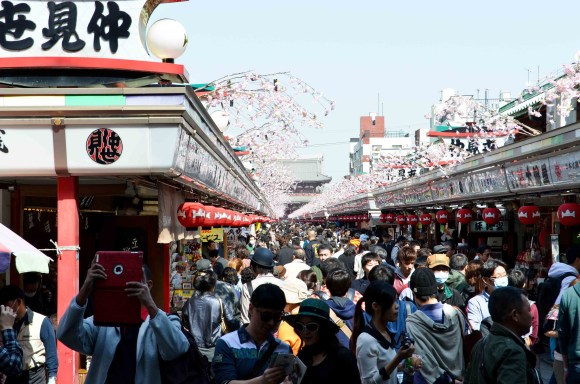
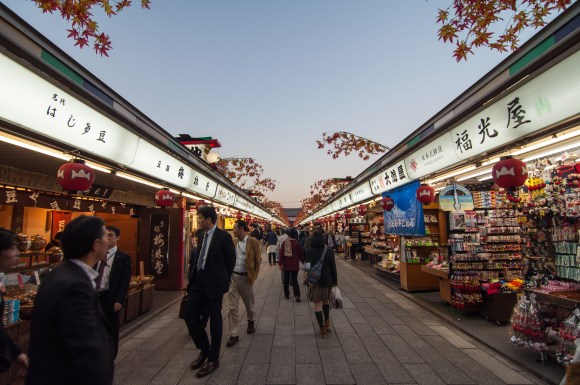
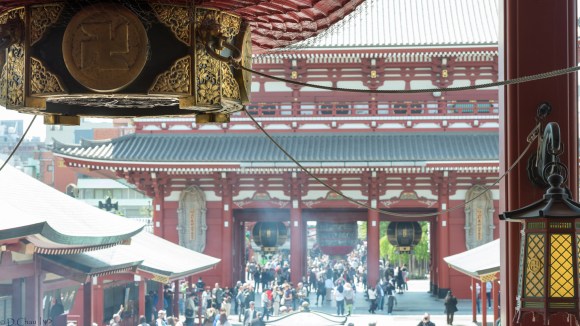
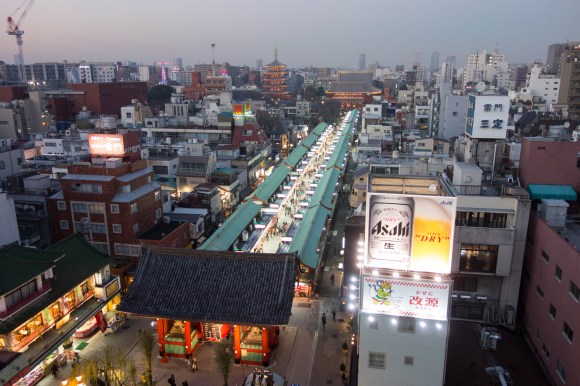
 Historic Asakusa shopping street in danger as Taito Ward calls for shop evictions
Historic Asakusa shopping street in danger as Taito Ward calls for shop evictions Moving to Tokyo? Real estate agent picks five best neighborhoods for single residents
Moving to Tokyo? Real estate agent picks five best neighborhoods for single residents New gift shop featuring giant Hello Kitty storefront to open in Asakusa this spring
New gift shop featuring giant Hello Kitty storefront to open in Asakusa this spring The top 10 shotengai shopping streets in Tokyo【Survey】
The top 10 shotengai shopping streets in Tokyo【Survey】 What to do if you want to lower your apartment rent or avoid paying key money in Japan
What to do if you want to lower your apartment rent or avoid paying key money in Japan Foreigner’s request for help in Tokyo makes us sad for the state of society
Foreigner’s request for help in Tokyo makes us sad for the state of society Historical figures get manga makeovers from artists of Spy x Family, My Hero Academia and more
Historical figures get manga makeovers from artists of Spy x Family, My Hero Academia and more McDonald’s new Happy Meals offer up cute and practical Sanrio lifestyle goods
McDonald’s new Happy Meals offer up cute and practical Sanrio lifestyle goods Red light district sushi restaurant in Tokyo shows us just how wrong we were about it
Red light district sushi restaurant in Tokyo shows us just how wrong we were about it Anime girl English teacher Ellen-sensei becomes VTuber/VVTUber and NFT
Anime girl English teacher Ellen-sensei becomes VTuber/VVTUber and NFT Celebrate another year of life by putting it in jeopardy with this birthday candle flower
Celebrate another year of life by putting it in jeopardy with this birthday candle flower Japan’s massive matcha parfait weighs 6 kilos, contains hidden surprises for anyone who eats it
Japan’s massive matcha parfait weighs 6 kilos, contains hidden surprises for anyone who eats it Sandwiches fit for a sumo served up in Osaka【Taste Test】
Sandwiches fit for a sumo served up in Osaka【Taste Test】 Tokyo Tsukiji fish market site to be redeveloped with 50,000-seat stadium, hotel, shopping center
Tokyo Tsukiji fish market site to be redeveloped with 50,000-seat stadium, hotel, shopping center A Gintama fan’s emotional 19-year journey to buy a proper Lake Toya bokuto wooden katana【Pics】
A Gintama fan’s emotional 19-year journey to buy a proper Lake Toya bokuto wooden katana【Pics】 Japanese ramen restaurants under pressure from new yen banknotes
Japanese ramen restaurants under pressure from new yen banknotes All-you-can-drink Starbucks and amazing views part of Tokyo’s new 170 meter-high sky lounge
All-you-can-drink Starbucks and amazing views part of Tokyo’s new 170 meter-high sky lounge French Fries Bread in Tokyo’s Shibuya becomes a hit on social media
French Fries Bread in Tokyo’s Shibuya becomes a hit on social media Studio Ghibli releases new action figures featuring Nausicaä of the Valley of the Wind characters
Studio Ghibli releases new action figures featuring Nausicaä of the Valley of the Wind characters New private rooms on Tokaido Shinkansen change the way we travel from Tokyo to Kyoto
New private rooms on Tokaido Shinkansen change the way we travel from Tokyo to Kyoto Studio Ghibli glasses cases let anime characters keep an eye on your spectacles
Studio Ghibli glasses cases let anime characters keep an eye on your spectacles Beautiful Ghibli sealing wax kits let you create accessories and elegant letter decorations【Pics】
Beautiful Ghibli sealing wax kits let you create accessories and elegant letter decorations【Pics】 Studio Ghibli releases Kiki’s Delivery Service chocolate cake pouches in Japan
Studio Ghibli releases Kiki’s Delivery Service chocolate cake pouches in Japan New definition of “Japanese whiskey” goes into effect to prevent fakes from fooling overseas buyers
New definition of “Japanese whiskey” goes into effect to prevent fakes from fooling overseas buyers Our Japanese reporter visits Costco in the U.S., finds super American and very Japanese things
Our Japanese reporter visits Costco in the U.S., finds super American and very Japanese things Studio Ghibli unveils Mother’s Day gift set that captures the love in My Neighbour Totoro
Studio Ghibli unveils Mother’s Day gift set that captures the love in My Neighbour Totoro New Japanese KitKat flavour stars Sanrio characters, including Hello Kitty
New Japanese KitKat flavour stars Sanrio characters, including Hello Kitty More foreign tourists than ever before in history visited Japan last month
More foreign tourists than ever before in history visited Japan last month New Pokémon cakes let you eat your way through Pikachu and all the Eevee evolutions
New Pokémon cakes let you eat your way through Pikachu and all the Eevee evolutions Sales of Japan’s most convenient train ticket/shopping payment cards suspended indefinitely
Sales of Japan’s most convenient train ticket/shopping payment cards suspended indefinitely Sold-out Studio Ghibli desktop humidifiers are back so Totoro can help you through the dry season
Sold-out Studio Ghibli desktop humidifiers are back so Totoro can help you through the dry season Japanese government to make first change to romanization spelling rules since the 1950s
Japanese government to make first change to romanization spelling rules since the 1950s Ghibli founders Toshio Suzuki and Hayao Miyazaki contribute to Japanese whisky Totoro label design
Ghibli founders Toshio Suzuki and Hayao Miyazaki contribute to Japanese whisky Totoro label design Doraemon found buried at sea as scene from 1993 anime becomes real life【Photos】
Doraemon found buried at sea as scene from 1993 anime becomes real life【Photos】 Tokyo’s most famous Starbucks is closed
Tokyo’s most famous Starbucks is closed One Piece characters’ nationalities revealed, but fans have mixed opinions
One Piece characters’ nationalities revealed, but fans have mixed opinions We asked a Uniqlo employee what four things we should buy and their suggestions didn’t disappoint
We asked a Uniqlo employee what four things we should buy and their suggestions didn’t disappoint Princesses, fruits, and blacksmiths: Study reveals the 30 most unusual family names in Japan
Princesses, fruits, and blacksmiths: Study reveals the 30 most unusual family names in Japan Kyoto tourist crowds disappearing due to coronavirus outbreak, creating travel crisis/opportunity
Kyoto tourist crowds disappearing due to coronavirus outbreak, creating travel crisis/opportunity Kyoto temple bans photography at famous autumn foliage viewing spots
Kyoto temple bans photography at famous autumn foliage viewing spots Survey finds roughly one in four all-night Internet cafe customers in Tokyo is homeless
Survey finds roughly one in four all-night Internet cafe customers in Tokyo is homeless Pokémon GO delayed in Japan? Time for us to transform into Pokémon ourselves and meet fans!【Pics】
Pokémon GO delayed in Japan? Time for us to transform into Pokémon ourselves and meet fans!【Pics】 11 cheapest Tokyo neighborhoods to rent an apartment in show living here’s not an impossible dream
11 cheapest Tokyo neighborhoods to rent an apartment in show living here’s not an impossible dream Tokyo realtor will give you hundreds of dollars of anime decorations for your new apartment
Tokyo realtor will give you hundreds of dollars of anime decorations for your new apartment Multiple nights in Tokyo? Dormy Inn “Residential” room adds amenities, great bath view in Asakusa
Multiple nights in Tokyo? Dormy Inn “Residential” room adds amenities, great bath view in Asakusa Bored with hotels? Abenomics bringing new lodging options for foreign tourists in Japan
Bored with hotels? Abenomics bringing new lodging options for foreign tourists in Japan Resol Poshtel: Cheap capsule hotel in Tokyo is a hit with overseas visitors, and we find out why
Resol Poshtel: Cheap capsule hotel in Tokyo is a hit with overseas visitors, and we find out why Calling all fans of anpan! You can try 20 kinds of anpan at this specialty shop in Asakusa
Calling all fans of anpan! You can try 20 kinds of anpan at this specialty shop in Asakusa Kanazawa’s historic “ninja temple” is packed full of hidden rooms, pitfalls, and more
Kanazawa’s historic “ninja temple” is packed full of hidden rooms, pitfalls, and more Is this chic hotel in Tokyo’s Asakusa district really a capsule hotel? As a matter of fact, yes!
Is this chic hotel in Tokyo’s Asakusa district really a capsule hotel? As a matter of fact, yes! How much money do you need to live in your own apartment in Japan?【Survey】
How much money do you need to live in your own apartment in Japan?【Survey】 Terahaku aims to be the Airbnb of Japanese temples
Terahaku aims to be the Airbnb of Japanese temples Neighbors Kamikitazawa introduces us to the cool side of shared Tokyo apartment rentals
Neighbors Kamikitazawa introduces us to the cool side of shared Tokyo apartment rentals Japanese clothing chain offers an answer to job-hunting suit conundrum
Japanese clothing chain offers an answer to job-hunting suit conundrum Is the end nigh for tapioca? Tokyo tapioca shops suffer closures in the midst of COVID-19
Is the end nigh for tapioca? Tokyo tapioca shops suffer closures in the midst of COVID-19
Leave a Reply